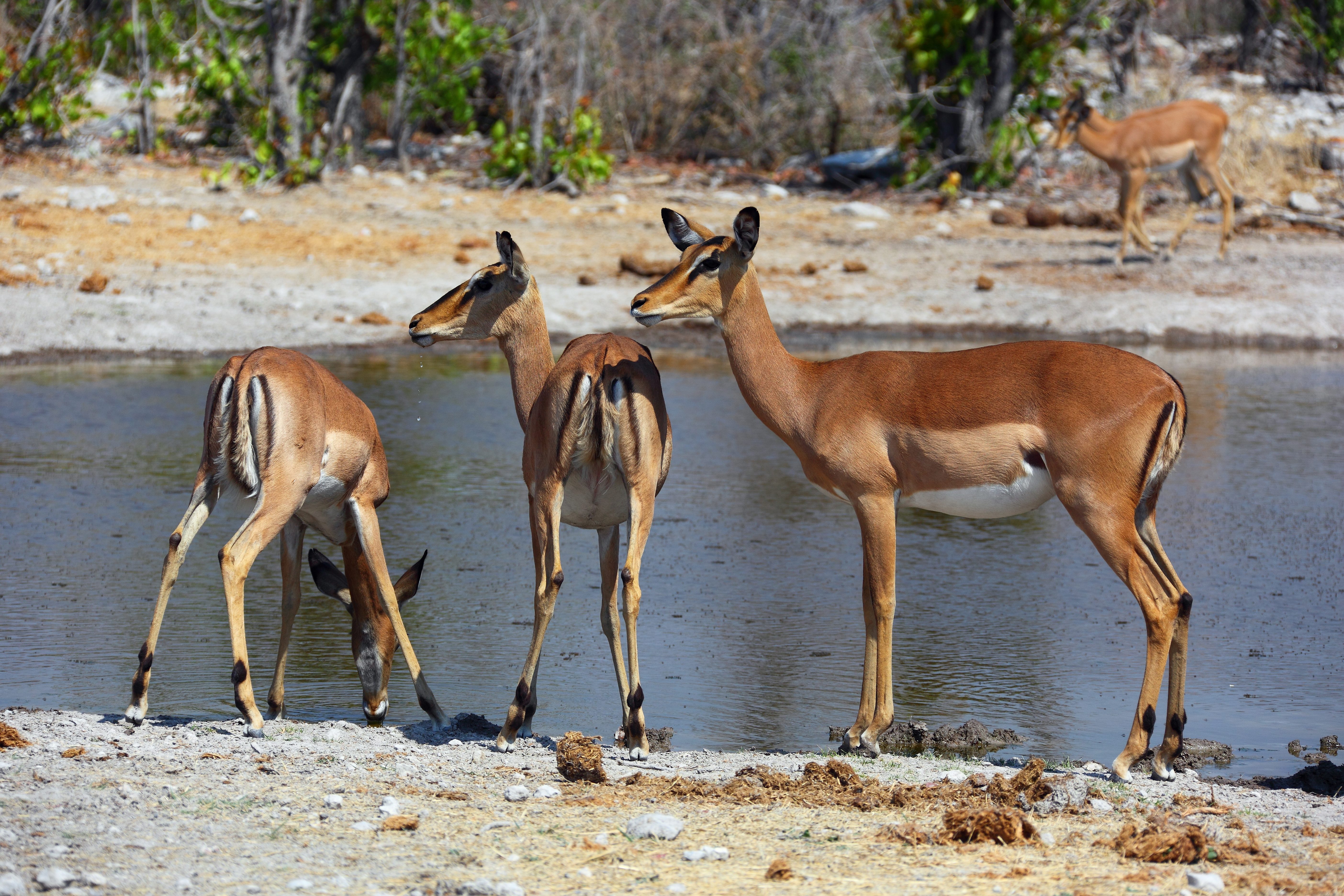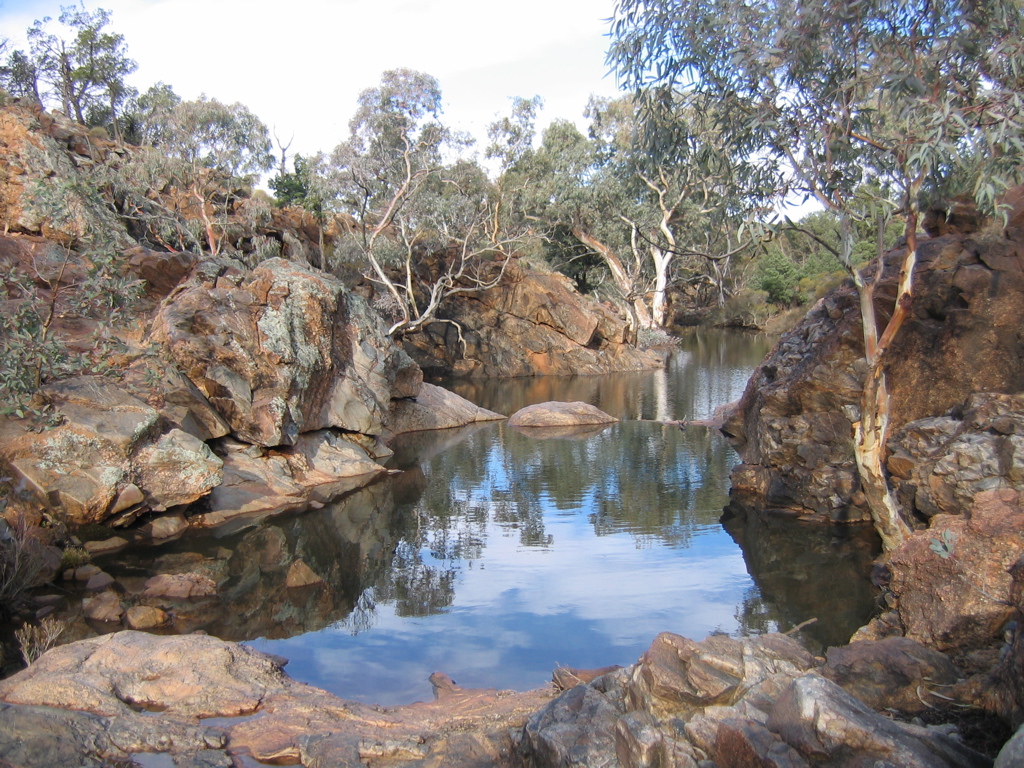|
Cooper Creek
The Cooper Creek (formerly Cooper's Creek) is a river in the Australian states of Queensland and South Australia. It was the site of the death of the explorers Burke and Wills in 1861. It is sometimes known as the Barcoo River from one of its tributaries and is one of three major Queensland river systems that flow into the Lake Eyre basin. The flow of the creek depends on monsoonal rains falling months earlier and many hundreds of kilometres away in eastern Queensland. It is in length. History Indigenous Australians have inhabited the area for at least 50,000 years, with over 25 tribal groups living in the Channel Country area alone. A vast trade network had been established running from north to south with goods such as ochre sent north with shells and pituri moved south. Birdsville was once a major meeting place for conducting ceremonies and trade. Charles Sturt named the river in 1845 after Charles Cooper, the Chief Justice of South Australia. It was along Cooper Creek th ... [...More Info...] [...Related Items...] OR: [Wikipedia] [Google] [Baidu] |
Charles Cooper (judge)
Sir Charles Cooper (1795 – 24 May 1887) was a politician and the first Chief Justice of South Australia. Biography Cooper was born in Henley-on-Thames, the third son of Thomas Cooper, under-sheriff of Oxfordshire. Charles entered the Inner Temple in 1822 and was called to the bar in February 1827. He practised on the Oxford circuit until 1838, and was then appointed judge at Adelaide. He and his sister Sarah Ann Cooper landed there in March 1839 in the ''Katherine Stewart Forbes'', and was for many years the sole judge, then senior judge, and in June 1856 was appointed the first South Australian chief justice. In September 1860 he was sworn in as a member of the Executive Council. Cooper retired from the bench in November 1861 and from the Executive Council in August 1862 owing to ill-health and was given a pension of £1000 a year. He returned to England in 1862, resided at Bath, Somerset, and improving much in his health lived to be 92 years of age. He died at London on ... [...More Info...] [...Related Items...] OR: [Wikipedia] [Google] [Baidu] |
Charles Sturt
Charles Napier Sturt (28 April 1795 – 16 June 1869) was a British officer and explorer of Australia, and part of the European exploration of Australia. He led several expeditions into the interior of the continent, starting from Sydney and later from Adelaide. His expeditions traced several of the westward-flowing rivers, establishing that they all merged into the Murray River, which flows into the Southern Ocean. He was searching to prove his own passionately held belief that an "inland sea" was located at the centre of the continent. He reached the rank of Captain, served in several appointed posts, and on the Legislative Council. Born to British parents in Bengal, British India, Sturt was educated in England for a time as a child and youth. He was placed in the British Army because his father was not wealthy enough to pay for Cambridge. After assignments in North America, Sturt was assigned to accompany a ship of convicts to Australia in 1827. Finding the place to his li ... [...More Info...] [...Related Items...] OR: [Wikipedia] [Google] [Baidu] |
Strzelecki Desert
The Strzelecki Desert is located in the Far North Region of South Australia, South West Queensland and western New South Wales. It is positioned in the northeast of the Lake Eyre Basin, and north of the Flinders Ranges. Two other deserts occupy the Lake Eyre Basin—the Tirari Desert and the Simpson Desert. Name It was named after the Polish explorer Paweł Edmund Strzelecki by Charles Sturt. Sturt was the first non-indigenous explorer in the area in late 1845, followed by the ill-fated Burke and Wills expedition in 1861. Geography The desert covers 80,250 km2 making it the seventh largest desert in Australia. The Dingo Fence, Birdsville Track, the Strzelecki Track, the Diamantina River, Cooper Creek and the Strzelecki Creek all pass through the Desert. The desert is characterised by extensive dune fields and is home to three wilderness areas. Much of the desert is preserved within the Strzelecki Regional Reserve in South Australia. Parts of the eastern secti ... [...More Info...] [...Related Items...] OR: [Wikipedia] [Google] [Baidu] |
Lake Yamma Yamma
Lake Yamma Yamma is an ephemeral lake on the Cooper Creek system in the arid Channel Country of south-western Queensland, Australia. The lake, which is sometimes called Lake Mackillop, is the largest inland ephemeral lake in Queensland. Description The lake only holds water following major floods on Cooper Creek. When filled the lake covers . It fills to capacity only about once every 25–30 years, most recently in 2000. The lake waters are fresh immediately after filling, but become increasingly saline as the lake dries out. When dry, the lake bed's cracking grey clay soils support extensive grasslands dominated by rat's tail couch. Several ephemeral forbs grow among the couch following rain or minor flooding. The north-eastern section supports open lignum shrubland with patches of open woodland dominated by coolabah and Belalie.BirdLife International. (2011.) Important Bird Areas factsheet: Lake Yamma Yamma. Downloaded from http://www.birdlife.org on 02/08/2011. Bird ... [...More Info...] [...Related Items...] OR: [Wikipedia] [Google] [Baidu] |
Depression (geology)
In geology, a depression is a landform sunken or depressed below the surrounding area. Depressions form by various mechanisms. Types Erosion-related: * Blowout: a depression created by wind erosion typically in either a partially vegetated sand dune ecosystem or dry soils (such as a post-glacial loess environment). * Glacial valley: a depression carved by erosion by a glacier. * River valley: a depression carved by fluvial erosion by a river. * Area of subsidence caused by the collapse of an underlying structure, such as sinkholes in karst terrain. * Sink: an endorheic depression generally containing a persistent or intermittent (seasonal) lake, a salt flat (playa) or dry lake, or an ephemeral lake. * Panhole: a shallow depression or basin eroded into flat or gently sloping, cohesive rock.Twidale, C.R., and Bourne, J.A., 2018Rock basins (gnammas) revisited.''Géomorphologie: Relief, Processus, Environnement,'' Vol. 24, No. 2. January 2018. Retrieved 9 June 2020. ... [...More Info...] [...Related Items...] OR: [Wikipedia] [Google] [Baidu] |
Ephemeral
Ephemerality (from the Greek word , meaning 'lasting only one day') is the concept of things being transitory, existing only briefly. Academically, the term ephemeral constitutionally describes a diverse assortment of things and experiences, from digital media to types of streams. "There is no single definition of ephemerality". With respect to unique performances, for example, it has been noted that " hemerality is a quality caused by the ebb and flow of the crowd's concentration on the performance and a reflection of the nostalgic character of specific performances". Because different people may value the passage of time differently, ephemerality may be a relative, perceptual concept: "In brief, what is short-lived may not be the object itself, but the attention we afford it".Ronald Beiner, ''Political Philosophy: What It Is and Why It Matters'' (2014), p. 10. Ephemerality and nature Geographical features An ephemeral stream is that which only exists following precipitation ... [...More Info...] [...Related Items...] OR: [Wikipedia] [Google] [Baidu] |
Tambo, Queensland
Tambo is a rural town and locality in the Blackall-Tambo Region, Queensland, Australia. Cattle and tourism are the major industries of the town. A number of heritage buildings survive from the earliest days of settlement. Geography Tambo is in Central West Queensland, Australia, on the banks of the Barcoo River. Tambo is southeast of the town of Blackall via the Landsborough Highway, north of Augathella, north of Charleville, north west of Toowoomba and approximately north west of the state capital, Brisbane. The Barcoo River runs through the town and sits near the Grey Range – part of the "Roof of Queensland" section of the Great Dividing Range. The Landsborough Highway—part of the National Highway network linking Brisbane and Darwin—passes through Tambo. Tambo is also connected to Alpha and Springsure by the Dawson Development Road. History Indigenous The area on which the town of Tambo now sits was home of many different Aboriginal groups including th ... [...More Info...] [...Related Items...] OR: [Wikipedia] [Google] [Baidu] |
Charters Towers, Queensland
Charters Towers is a rural town in the Charters Towers Region, Queensland, Australia. It is by road south-west from Townsville on the Flinders Highway. During the last quarter of the 19th century, the town boomed as the rich gold deposits under the city were developed. After becoming uneconomical in the 20th century, profitable mining operations have commenced once again. In the , Charters Towers had a population of 8,120 people. Geography and climate The urban area of the town of Charters Towers includes its suburbs: Charters Towers City (the centre of the city); Richmond Hill, Toll, and Columbia to the north, Queenton to the east, Grand Secret and Alabama Hill to the west, and Towers Hill, Mosman Park, and Millchester to the south. Charters Towers township is only mildly elevated at above sea-level, but this has a noticeable effect, with lower humidity and wider temperature variations compared to nearby Townsville. Charters Towers obtains its water supply from th ... [...More Info...] [...Related Items...] OR: [Wikipedia] [Google] [Baidu] |
Longreach, Queensland
Longreach is a town and a locality in the Longreach Region, Queensland, Australia. It is the administrative centre of the Longreach Regional Council, which was established in 2008 as a merger of the former Longreach, Ilfracombe, and Isisford shires. Longreach is a well known tourist destination due to its aviation history and importance. In the , the locality of Longreach had a population of 3,124 people. Geography Longreach is in Central West Queensland, approximately from the coast, west of Rockhampton. The town is on the Tropic of Capricorn in the south-east of the locality. The town is named after the ‘long reach’ of the Thomson River on which it is situated. Lochern National Park is in the south-western part of the locality (formerly in Vergemont). The main industries of the area are cattle, sheep, and, more recently, tourism. The Landsborough Highway enters the locality from the south-east ( Ilfracombe), passes through the town and then exits to the nort ... [...More Info...] [...Related Items...] OR: [Wikipedia] [Google] [Baidu] |
Thomson River, Queensland
The Thomson River is a perennial river that forms part of the Lake Eyre Basin, situated in the central west and western regions of Queensland, Australia. Much of the course of the river comprises a series of narrow channels synonymous with the Channel Country and the Galilee subregion. The river was named in 1847 by the explorer, Edmund Kennedy, in honour of The Hon. Sir Edward Deas Thomson , the Colonial Secretary of New South Wales at the time of discovery. History Kuungkari (also known as Kungkari and Koonkerri) is a language of Western Queensland. The Kuungkari language region includes the landscape within the local government boundaries of Longreach Shire Council and Blackall-Tambo Shire Council. Course and features Draining the Alma Range, part of the western slopes of the Great Dividing Range, the northernmost headwaters of the river begin as Torrens Creek, inland from Charters Towers. The watercourse becomes the Thomson just north of the town of Muttaburra, w ... [...More Info...] [...Related Items...] OR: [Wikipedia] [Google] [Baidu] |
Great Dividing Range
The Great Dividing Range, also known as the East Australian Cordillera or the Eastern Highlands, is a cordillera system in eastern Australia consisting of an expansive collection of mountain ranges, plateaus and rolling hills, that runs roughly parallel to the east coast of Australia and forms the fifth-longest land-based mountain chain in the world, and the longest entirely within a single country. It is mainland Australia's most substantial topographic feature and serves as the definitive watershed for the river systems in eastern Australia, hence the name. The Great Dividing Range stretches more than from Dauan Island in the Torres Strait off the northern tip of Cape York Peninsula, running the entire length of the eastern coastline through Queensland and New South Wales, then turning west across Victoria before finally fading into the Wimmera plains as rolling hills west of the Grampians region. The width of the Range varies from about to over .Shaw, John ... [...More Info...] [...Related Items...] OR: [Wikipedia] [Google] [Baidu] |
The Recorder (Port Pirie)
''The Recorder'' is a newspaper published in Port Pirie, South Australia since 1885. Formed by an amalgamation in 1898, it was also previously known as ''Port Pirie Recorder and North Western Mail'' between 1898 and 1918, and as ''The Recorder'' from 1919. It was later sold to Rural Press, previously owned by Fairfax Media, but now an Australian media company trading as Australian Community Media. History The town, later city, of Port Pirie had two newspapers, ''The Port Pirie Advocate and Areas News'', published weekly from 21 March 1885, (later simplified to ''The Port Pirie Advocate'' (1895-1898)), and ''The Port Pirie Standard'' ''and Barrier Advertiser'', published weekly from 4 January 1889. They amalgamated to form ''The Port Pirie Recorder'' ''and North Western Mail'', first published on 9 July 1898, appearing on Saturday and Wednesday mornings, printed and published jointly by Alfred Edward South (1861 – 1 January 1934) of the ''Advocate'', and Charles Meyrick (died 3 ... [...More Info...] [...Related Items...] OR: [Wikipedia] [Google] [Baidu] |





_(2013).jpg)


